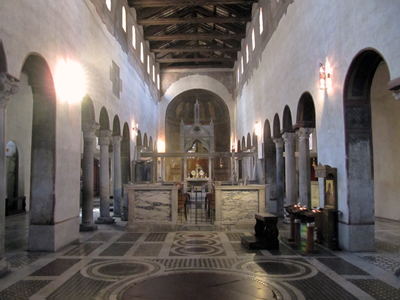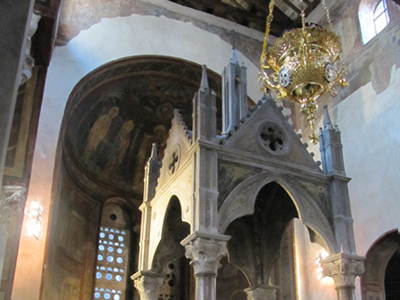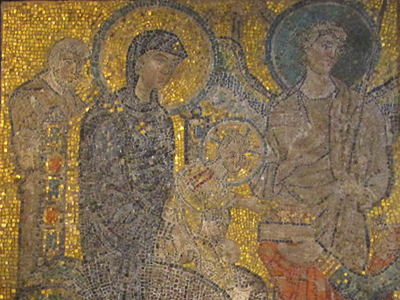SUN AN’ SOUL - DREAM AN’ ROME
SANTA MARIA IN COSMEDIN
 |
| Santa Maria in Cosmedin - click to enlarge |
The basilica di Santa Maria in Cosmedin overlooks Bocca della Verità square, which is at the center of the ancient Forum Boarium where the cattle market was held.
The church stands on the very ancient shrine, dating back to the fifth century BC said Ara Maxima of Hercules, whose podium is located in the crypt of the church. Later in this same place was built the Statio Annonae, food collection and distribution center, a sort of general market.
Santa Maria in Cosmedin dates back to the sixth century, when Pope Gregorio the Great built a small church, a diakonia, assisting Christians and in general the starving Roman people. In the seventh century, the church was enlarged, incorporating part of the ancient Statio Annonae and thanks to its decoration took the name of Santa Maria in Cosmedin, from greek kosmidion, which means ornament. The use of the greek lamguage was linked to the fact that near the church lived the Greek community, also the same church was granted by the Pope to the Greek monks when they fled to Rome to escape from the persecution of the iconoclasts (iconoclasm = destruction of sacred images).
The porch dates back to 1120, and again in the twelfth century was erected the seven orders Romanesque bell tower.
| click to enlarge |
 |
 |
| The porch |
Bell tower |
Inside the porch, the “Bocca della Verità” (= Truth Mouth) is one of the famous Roman attractions.
In the Middle Ages it was rumored that uttered oracles; but if you want the crude truth, in ancient Rome it was a manhole, with the face of a river god that swallows water.
 |
| Bocca della Verità - click to enlarge |
The interior of the church shows a nave and two aside isles, separated by pillars
and eighteen columns coming from various ancient buildings.
 |
| The interior - click to enlarge |
At the center of the nave you can see the magnificent Schola Cantorum, where a choir of young people accompanied the religious functions. The first Schola Cantorum instituted by Pope Silvestro I (314-335), spread throughout the Christian world.
Along the walls of the aisle there are traces of frescoes dating from VIII to XII century.
Above the high altar the ciborium is a masterpiece of Deodato Cosma (one of the famous Cosmati Masters), active between 1290 and 1330. At the center of the main apse the episcopal chair dating back to the twelfth century.
 |
| Ciborium - click to enlarge |
The central nave frescoes, as well as those of the small apses date back to the eleventh century.
From the left aisle you can descend into the crypt, where are the traces of the Ara Maxima of Hercules and a medieval icon.
 |
| Medieval Icon - click to enlarge |
Coming back in the nave deserves watching the truss ceiling and the wonderful cosmatesco floor.
 |
| Cosmatesco floor - click to enlarge |
In the counter-façade you see two columns of the Statio Annonae.
Moving to the sacristy the precious mosaic on a gold background representing the Epiphany comes from the Vatican after the demolition of the Constantine Basilica of St. Peter in the Vatican.
 |
| Mosaic - click to enlarge |
back |

